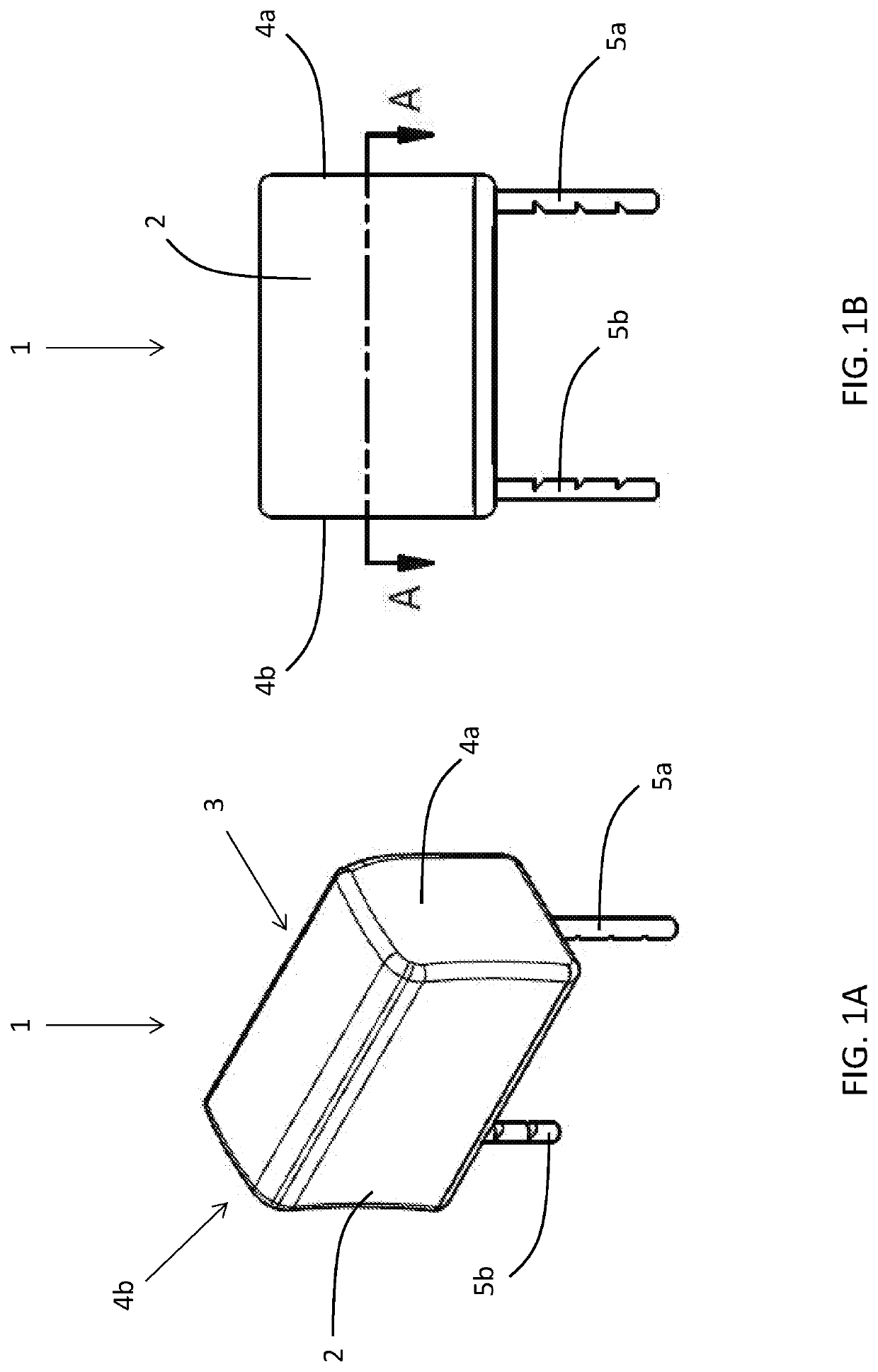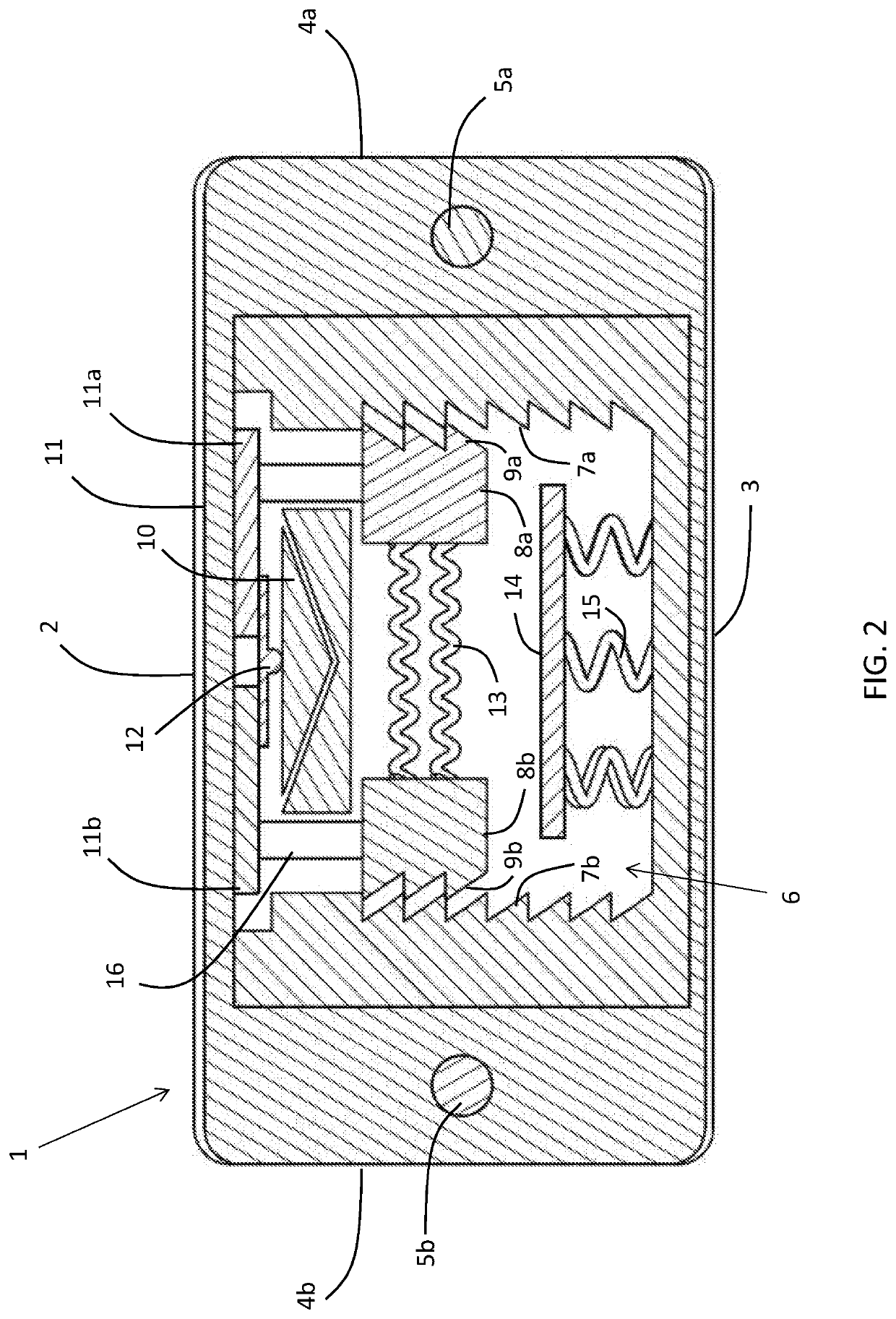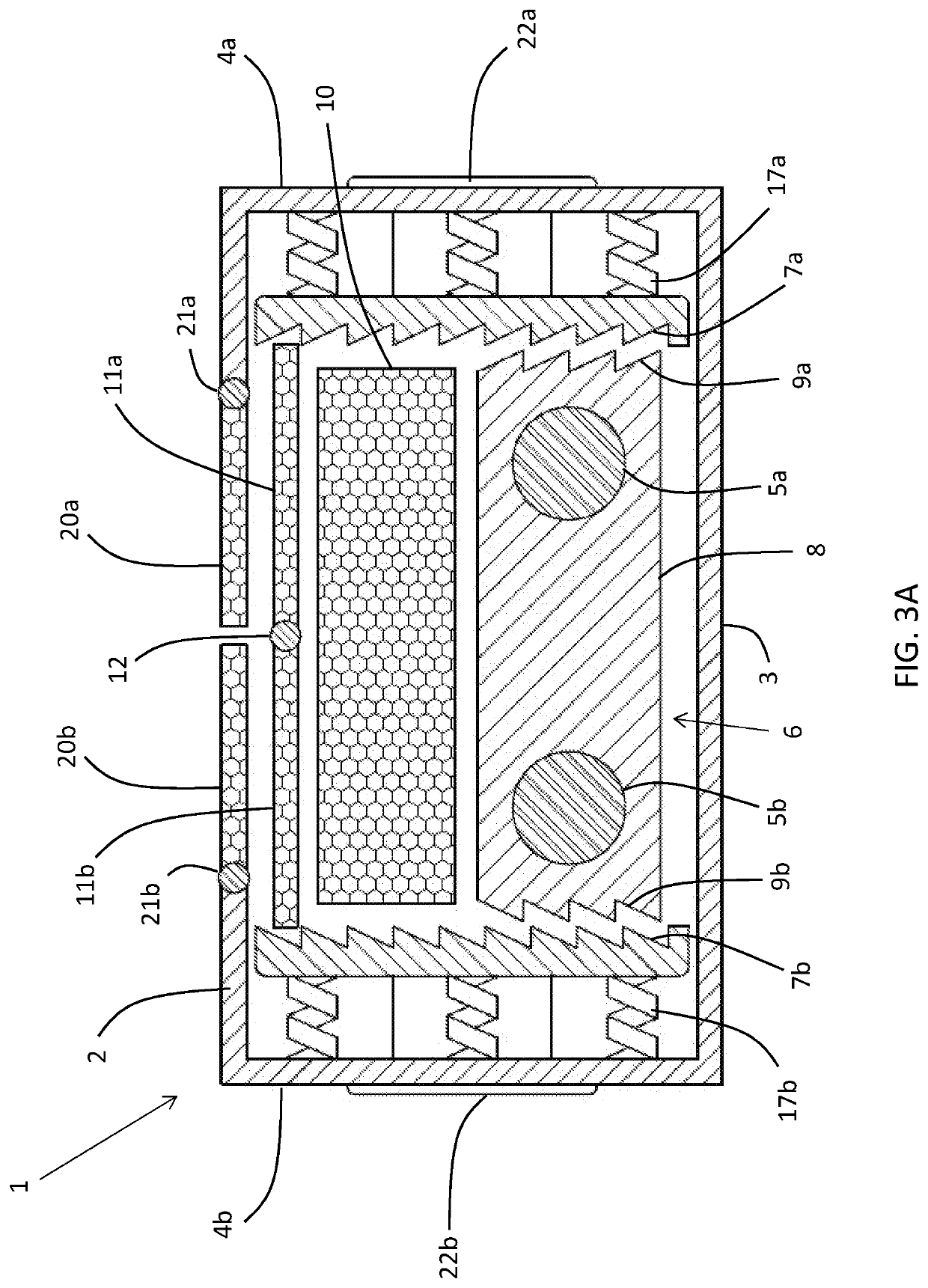Reduced-impact-and-recoil headrest
a headrest and occupant technology, applied in the direction of headrests, vehicle components, vehicle arrangements, etc., can solve the problems of reducing the impact felt by the occupant, causing death and injury, and causing thousands of automobile accidents. , to achieve the effect of reducing the impact and minimizing the recoil
- Summary
- Abstract
- Description
- Claims
- Application Information
AI Technical Summary
Benefits of technology
Problems solved by technology
Method used
Image
Examples
example 1
[0040]The present invention includes a reduced-impact-and-recoil headrest including complementary components adapted to translate upon impact via a ratchet mechanism. The ratchet mechanism is adapted to cushion a vehicle occupant's head during a collision, as well as minimize recoil to prevent whiplash. The reduced-impact-and-recoil headrest includes a housing and a bracket disposed within the housing. The bracket and the housing each include complementary surfaces configured to form a part of the ratchet mechanism. During an impact, either the housing or the bracket translates with respect to the other component, allowing the occupant's head and neck to be cushioned from the full force of the impact. In addition, the opposing surfaces of the ratchet mechanism prevent the translatable component from recoiling toward an initial position, thereby minimizing the risk of the occupant experiencing whiplash.
[0041]As shown in FIGS. 1A and 1B, reduced-impact-and-recoil headrest 1 includes o...
example 2
[0064]In an embodiment of the present invention, as shown, for example, in FIG. 4A, headrest 1 includes proximal wall 2, distal wall 3, and sidewalls 4a, 4b. The walls define interior compartment 6, within which movable bracket 8 is disposed. Also disposed within interior compartment is base 30, which is adapted to be anchored to a vehicle's seat via stalks 5a, 5b, which are coupled to base 30. As such, in use, base 30 remains substantially stationary, while headrest 1 translates with respect to base 30, particularly during an impact. However, it should be appreciated that, so long as base 30 is adapted to be secured to the vehicle's seat via, for example, stalks 5a, 5b, it is unimportant whether base 30 is disposed within interior compartment 6. So long as headrest 1 translates with respect to base 30, base 30 can be disposed within interior compartment 6, or adjacent to distal wall 3.
[0065]As shown in FIGS. 4A-4B, base 30 includes tab 31 and tab spring 33 coupled thereto, as well ...
PUM
 Login to View More
Login to View More Abstract
Description
Claims
Application Information
 Login to View More
Login to View More - R&D
- Intellectual Property
- Life Sciences
- Materials
- Tech Scout
- Unparalleled Data Quality
- Higher Quality Content
- 60% Fewer Hallucinations
Browse by: Latest US Patents, China's latest patents, Technical Efficacy Thesaurus, Application Domain, Technology Topic, Popular Technical Reports.
© 2025 PatSnap. All rights reserved.Legal|Privacy policy|Modern Slavery Act Transparency Statement|Sitemap|About US| Contact US: help@patsnap.com



